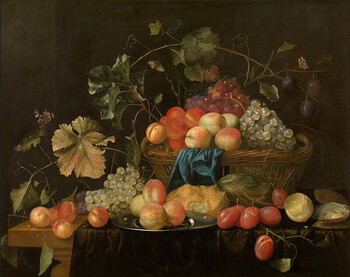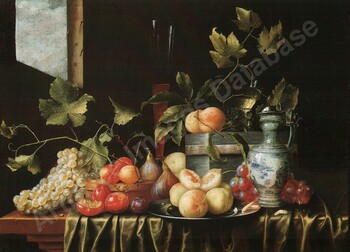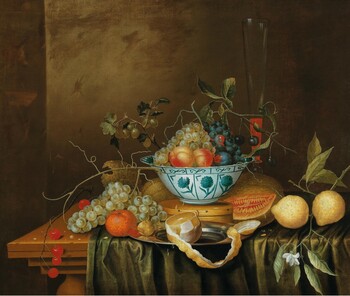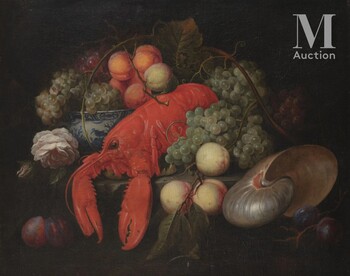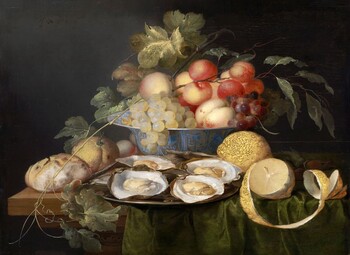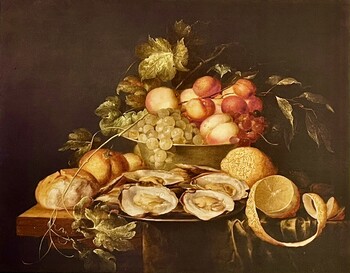19.800 €
A wicker basket filled with peaches and grapes, a silver plate with oysters, bread and a lemon on a partly draped table
Oil on canvas : 56,0 X 81,7 cm
Dated and signed lower right “f. 1654 / TEODOER. AENVANCK”
Frame : 76,1 X 100,4 cm
Provenance : - in 1979 with the Richard Green Gallery in London
- Sold at Brunk Auctions, Asheville CT, 29/09/22 at the estate sale of the antiques dealer Peter H. Tillou for 14.760 $ = 15.076 €
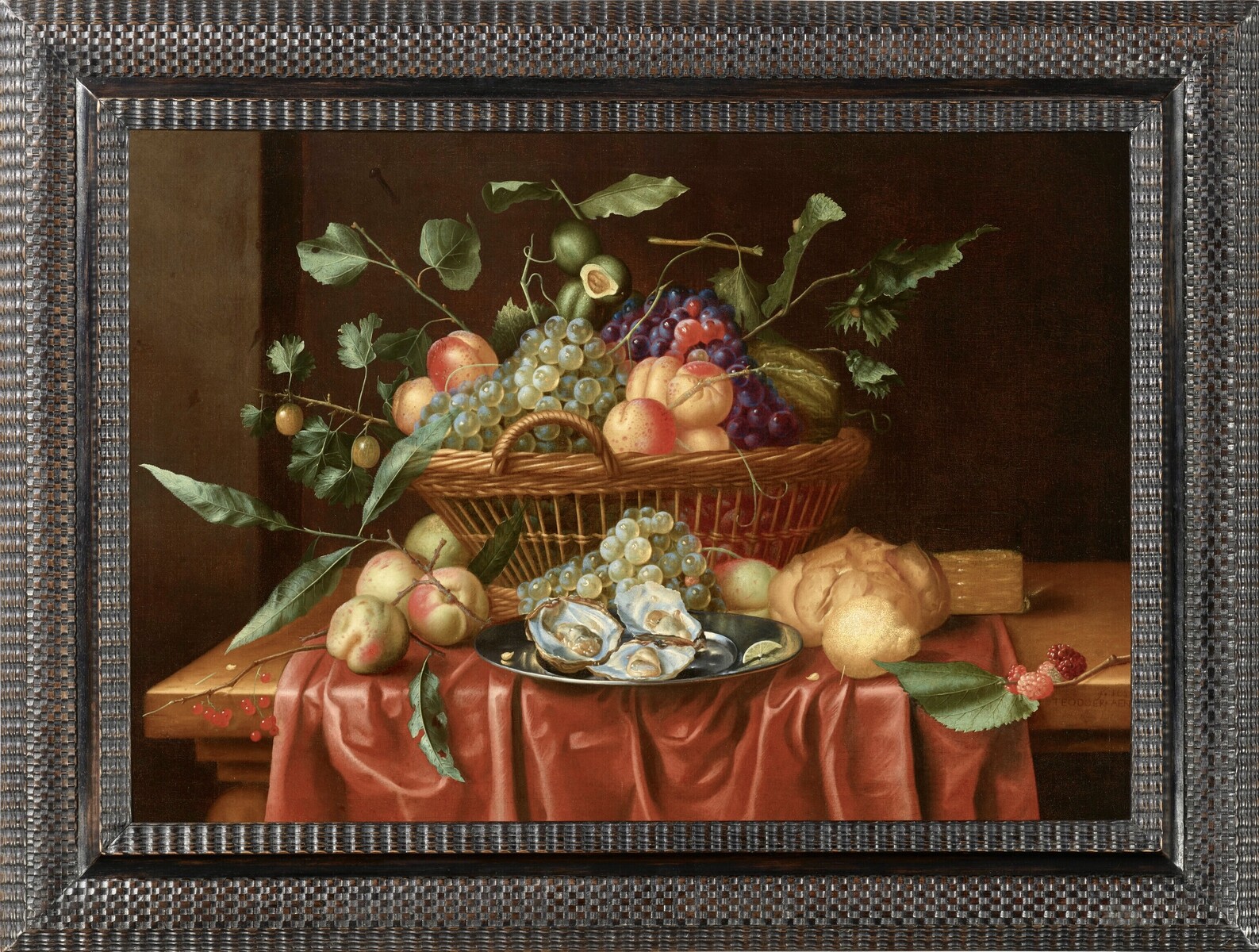
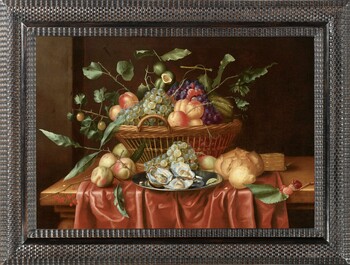
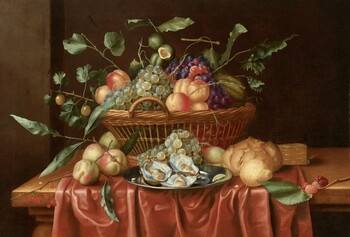
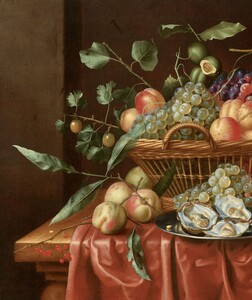
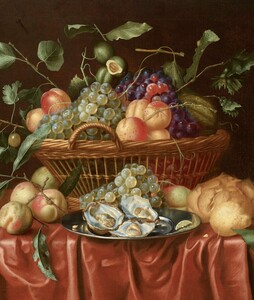
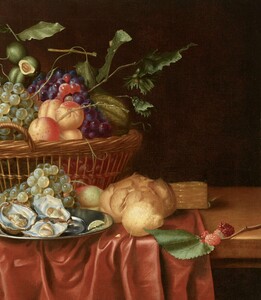
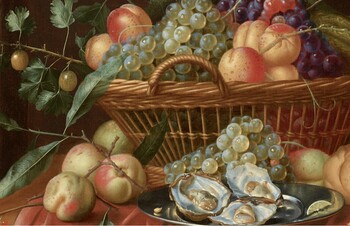
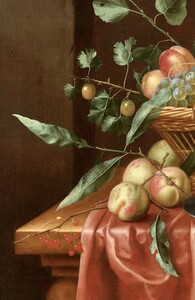
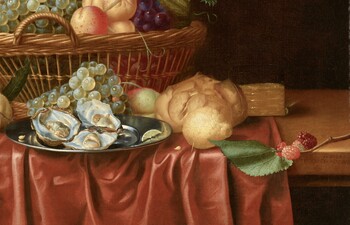
About Theodoor van Aenvanck
Flemish painter
Antwerp 1633 – after 19 April 1690
Rare still life painter.
Van Aenvanck was inscribed as a pupil in the year 1647/1648 in the Painter’s Guild of his hometown Antwerp; strangely it is not known whom he studied under, although it is generally accepted that must have been under Jan Davidsz. de Heem (Utrecht 1606 - 1684 Antwerp). De Heem clearly influenced our painter. As he did influence other contemporary Antwerp painters, such as Joris van Son, Alexander Coosemans, Jan Pauwel Gillemans I and II, Andries Benedetti or Guilliam van Deynum.
Jan Davidsz. de Heem (Utrecht 1603 – 1683/84 Antwerp) was one of the most, if not the most important 17th century “Dutch” still life painters. Jan was indeed born and trained in Holland, but he bloomed in Flanders, in Antwerp. In the early 1630s he moved with his wife and his son Cornelis from Leiden to Antwerp, where he spent his most productive years until the end of the 1650s. Jan must then have lived the major part of the 1660s in Utrecht until the French invasion of Holland in 1672, when he fled, as so many of his colleagues, back to Antwerp. He remained here until his death in 1683 or 1684. Although de Heem had a huge influence on many Flemish and Dutch still life painters he did not have that many pupils.
Van Aenvanck (he is sometimes simply called Aenvanck) must have made several long journeys. He joined the local Painter’s Guild in Antwerp as a Master only in the year 1669/1670.
There is very little information about this rare painter.
His whereabouts are unknown after 19 April 1690.
Why should you buy this painting?
Because it is a very nice, fully signed and dated painting with a good provenance.
Comparative paintings
Click photos for more details

